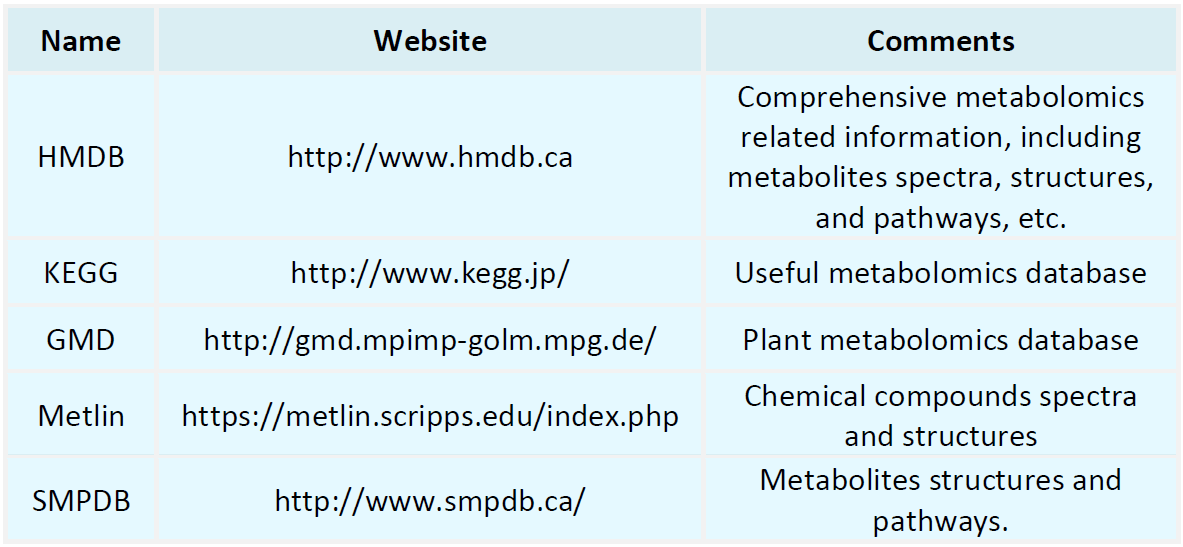Resources
Proteomics Databases

Metabolomics Databases

-
The peptide mapping workflow encompasses enzymatic digestion, chromatographic separation, and mass spectrometry analysis of target proteins or antibodies to construct detailed peptide maps. These maps provide insights into molecular structures, post-translational modifications, and sequence variants. As a cornerstone for protein structure characterization and quality control, this workflow plays an integral role in drug development, biomarker discovery, and process optimization. Basic Workflow The p......
-
Peptide Mass Mapping is a core data form in proteomics and bioanalytical research. It is generated by detecting the mass-to-charge ratio (m/z) of peptides using a mass spectrometer, producing specific spectral signals to deduce peptide sequence information and post-translational modifications. It serves as a crucial tool for understanding protein molecular structure, function, and interactions, holding irreplaceable value in biopharmaceutical development, disease mechanism research, and fundamental li......
-
• Unlocking Hidden Secrets: Comprehensive Strategies for Unknown Protein Analysis
The field of unknown protein analysis relies on systematic approaches to uncover the structure, function, and biological roles of these enigmatic molecules. Advancements in Genomics and Transcriptomics The foundation of unknown protein analysis lies in leveraging high-throughput sequencing to extract genomic and transcriptomic data. These datasets enable the identification of novel genes and transcripts encoding unknown proteins. For instance, whole-genome sequencing may reveal genes with no known f......
-
• Identification of Unknown Proteins in Mixed Protein Samples
The identification of unknown proteins in mixed protein samples is a cornerstone technique in biological research, enabling the characterization of individual proteins within complex mixtures. This method is essential for applications in drug development, biomarker discovery, and the investigation of disease pathways. As a fundamental component of proteomics, the identification of unknown proteins in mixed protein samples continues to drive advancements in understanding biological systems. Identific......
-
• Determination of Unknown Proteins
The determination of unknown proteins encompasses several systematic approaches: 1. Genomic Strategies Gene sequencing provides essential data for identifying unknown proteins. Bioinformatics tools analyze genomic sequences to predict potential protein-coding regions, contributing to the determination of unknown proteins. 2. Proteomics Applications Proteomics facilitates comprehensive analysis of cellular protein types and interactions, offering critical insights for the determination of unknown pro......
-
• Unveiling the Mysteries of Unknown Proteins: From Detection Techniques to Data Interpretation
The determination of unknown proteins requires a multidisciplinary approach involving advanced technologies for detection, analysis, and validation: Detection Techniques 1. Mass Spectrometry This sensitive analytical method enables precise identification of unknown proteins by determining molecular weights, amino acid sequences, and post-translational modifications. 2. Genomics and Transcriptomics Methods such as RNA sequencing and gene expression profiling provide evidence for unknown proteins by......
-
• Identification of Unknown Proteins
Identification of unknown proteins is a critical task in life sciences, as proteins are fundamental to life, driving essential cellular functions and providing structural integrity. Despite their importance, many proteins remain uncharacterized. The identification of these unknown proteins is vital for uncovering the mechanisms of biological systems, advancing therapeutic development, and pinpointing novel drug targets. The complexity and diversity of life can be better understood through the identi......
-
• How to Identify Unknown Proteins
The process to identify unknown proteins involves a series of carefully coordinated steps: Protein Extraction and Purification Proteins are extracted from cell or tissue samples and purified using techniques like centrifugation, chromatography, or electrophoresis to isolate the target protein for subsequent analysis. Protein Separation Gel electrophoresis methods, such as SDS-PAGE, are commonly applied to separate proteins based on molecular size or charge. Protein Identification 1. Mass Spectro......
-
• Applicable Materials for Protein Identification
1. Applicable Materials for Protein Identification Applicable materials for protein identification are essential for advancing biological research. These materials support the recognition and quantification of proteins from a wide array of biological specimens. Insights derived from such analyses enhance our understanding of biological processes, elucidate the molecular mechanisms underlying diseases, and guide the development of therapeutic strategies. Below, we outline the primary applicable materia......
-
• Which Types of Mass Spectrometry Are Suitable for Protein Identification
Mass spectrometry (MS) serves as a cornerstone in protein identification, with methods like MALDI-MS, ESI-MS, MS/MS, and LC-MS/MS offering diverse analytical capabilities. Matrix-Assisted Laser Desorption/Ionization Time-of-Flight Mass Spectrometry (MALDI-MS) MALDI-MS leverages laser energy to ionize and desorb sample-matrix mixtures, analyzing ion flight times to measure molecular mass. This technique excels in determining the mass of proteins and peptides, especially those with higher molecular we......
How to order?







